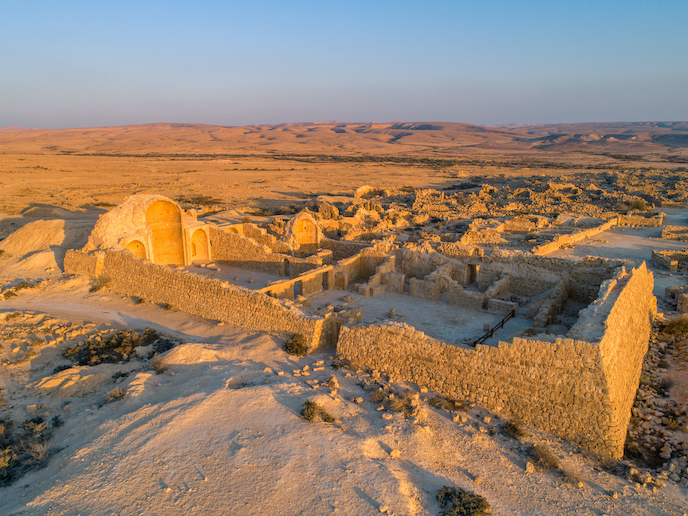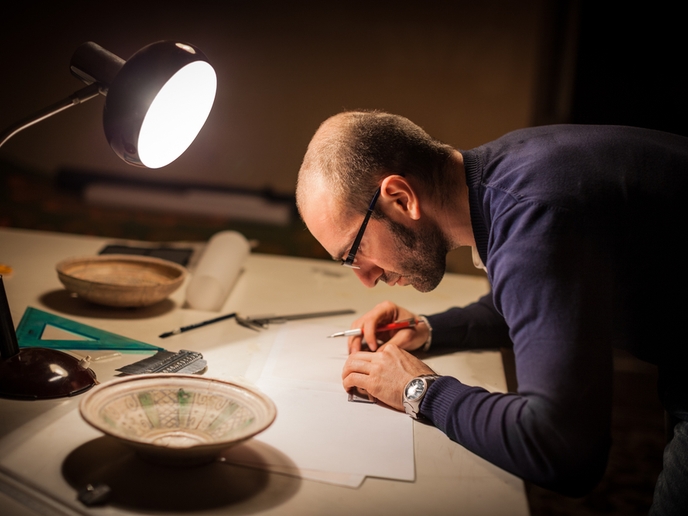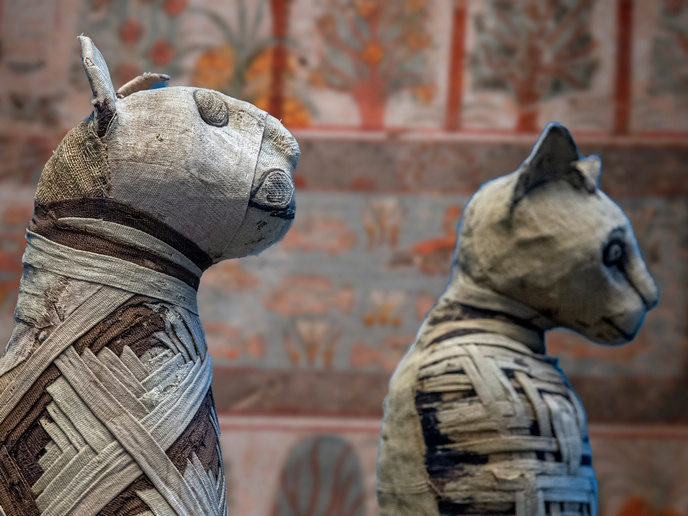Enduring mystery surrounds the collapse of a Byzantine society
The EU-funded NEGEVBYZ project investigated three historical sites in the south of Israel: the towns of Shivta, Elusa and Nessana. Despite being some of the best-preserved Byzantine settlements in the world, they are poorly studied. “The story of the Negev has never been told, it’s interesting because it’s a complex society developed under vulnerable conditions on the fringe of the desert,” says project coordinator Guy Bar-Oz.
Desert agriculture
Bar-Oz and his team from the University of Haifa found the Byzantine farmers had developed innovative solutions to enable their crops to grow in such a marginal climate with no stable water supply. Grape vines were planted in dried riverbeds known as wadis, and the surrounding hills cleared of surface stones to encourage soil from the hills to be washed down into the wadi. Earthen dams were constructed there to catch the floodwater in fields and cisterns. To enrich the poor-quality desert soils, the Byzantine farmers built pigeon towers, some of which are still standing today. The guano collected from the base of the towers was used to fertilise cropland. “The manure is loaded with sulphur, phosphates and magnesium, it’s especially good for vineyards,” adds Bar-Oz.
Decline and fall
Through such innovations, the region became famous for its wines, yet after three centuries of success, Shivta and its neighbouring villages were abandoned. Many theories have been put forward for why. The first is that the towns fell to Islamic invasion, which occurred around 640 CE. The second is that they were hit by the Justinian plague, which swept through Europe and the Middle East a century earlier. The third is that the region was affected by the Late Antique Little Ice Age (LALIA), a cooling of the climate brought about by volcanic eruptions. Evidence collected by Bar-Oz and his team shows the area was in decline long before the Islamic invasions. “The abandonment of pigeon towers and agriculture, and sealing of houses and doors, radiocarbon dating from the trash dumps; all show the decline was between the mid-6th and late-6th century,” he explains. Likewise, they found little impact of plague, and isotopic analysis of sheep and goat teeth did not present good evidence of local climate change. “At the end of the day, why did it collapse? I really don’t know,” says Bar-Oz. He hypothesises that the Negev’s decline may have resulted from a collapse in the demand for wine as Europe was hit by plague and climate change. The NEGEVBYZ team carried out the first palaeobotanical investigations of these sites, recovering huge amounts of plant material, pollen, grains and grape pips. “The pigeon towers are very well protected, with the birds bringing nesting material and food remains; they are a beautiful capsule loaded with botanical remains,” notes Bar-Oz. The team hope to identify local grape cultivars adapted to desert growing conditions. The work was supported by the European Research Council. “This funding enabled me to hire the best people, pay the best scholarships, and conduct the best collaborations,” adds Bar-Oz. “Thanks to the EU I was able to work locally but think globally.”
Keywords
NEGEVBYZ, Negev, desert, Israel, Haifa, Shivta, Elusa, Nessana, grape, pigeon, wadi, sheep, goat, agriculture







